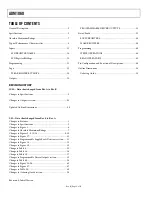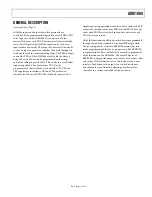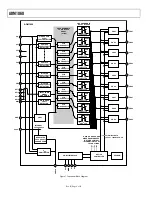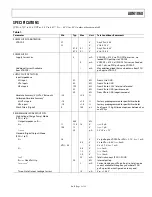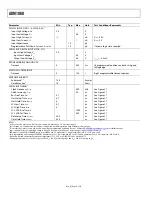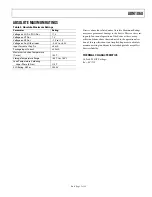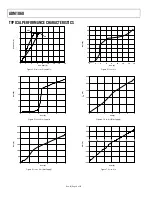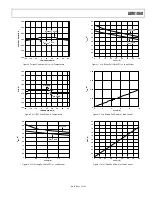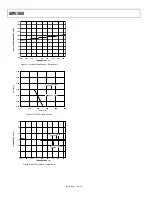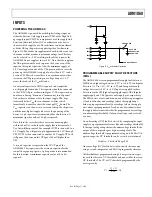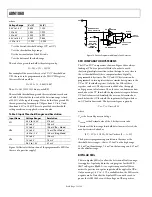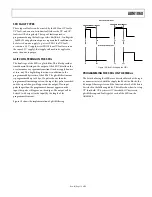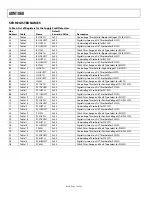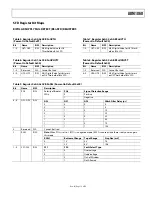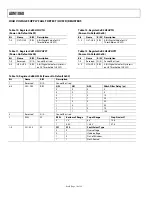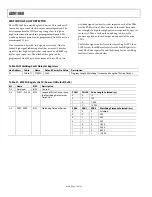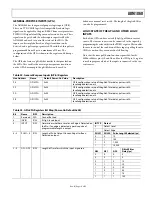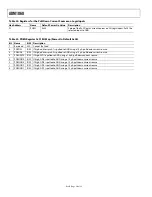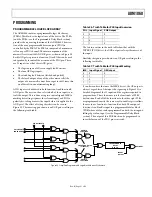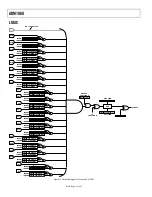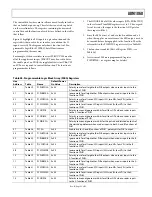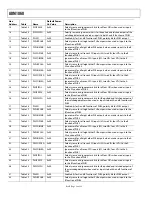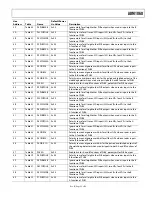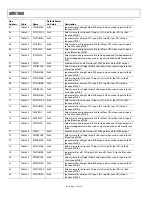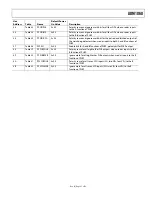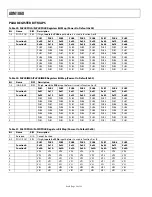
ADM1060
Rev. B | Page 13 of 52
SFD FAULT TYPES
Three types of faults can be asserted by the SFD: an OV fault, a
UV fault, and an out-of-window fault (where the UV and OV
faults are OR’ed together). The type of fault required is
programmed using the fault type select bits (Bits 0, 1 in Register
_SnSEL). If an application requires separate fault conditions to
be detected on one supply (e.g., assert PDO1 if a UV fault
occurs on a 3.3 V supply, assert PDO9 if an OV fault occurs on
the same 3.3 V supply), that supply will need to be applied to
more than one input pin.
GLITCH FILTERING ON THE SFDs
The final stage of the SFD is a glitch filter. This block provides
time domain filtering on the output of the SFD. This allows the
user to remove any spurious transitions (such as supply bounce
at turn-on). This deglitching function is in addition to the
programmable hysteresis of the SFDs. The glitch filter timeout
is programmable up to 100 µs. If a pulse shorter than the
programmed timeout appears on the input, this pulse is masked
and the signal change will appear on the output. If an input
pulse longer than the programmed timeout appears on the
input, this pulse will appear on the output. The output will be
delayed (with respect to the input) by the length of the
programmed timeout.
Figure 19 shows the implementation of glitch filtering.
GLITCH FILTER INPUT
PROGRAMMED TIMEOUT
PROGRAMMED TIMEOUT
t
GF
t
GF
t
0
t
0
t
GF
t
GF
t
0
t
0
GLITCH FILTER OUTPUT
Figure 19. Glitch Filtering on the SFDs
PROGRAMMING THE SFDs ON THE SMBus
The details of using the SMBus are described later, but the regis-
ter names associated with the supply fault detector blocks, the
bit map of those registers, and the function of each of the bits is
described in the following tables. The tables show how to set up
UV threshold, UV hysteresis, OV threshold, OV hysteresis,
glitch filtering, and fault type for each of the SFDs on the
ADM1060.


